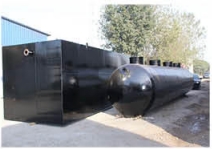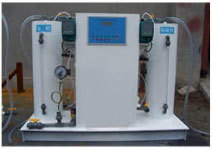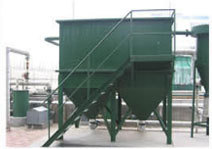Medical sewage treatment works
Release time:
2024-06-25
The quality of hospital sewage is similar to domestic sewage, but the composition is complex. Such as disinfectants, heavy metals, organic reagents, and possible radioactive isotopes from various departments such as laboratory tests, inspections, and surgeries. As a hospital, its sewage contains a large number of toxic chemicals and a variety of pathogenic bacteria, viruses and parasitic eggs. They have certain adaptability in the environment, and some even survive for a long time in sewage. If they are not treated or not treated immediately discharged into water or used for irrigation, they will pollute the environment and affect people's health.
Case analysis
CASE ANALYSIS
Product classification: Medical sewage treatment engineering
Project Name: Mudanjiang a hospital sewage treatment project
Pollution control type: hospital medical wastewater and daily sewage treatment
Treatment scale: daily treatment capacity of 120 tons. Implementation standard: comprehensive primary emission standard
Treatment process: the combination of hydrolysis acidification and biological contact oxidation
Project Description: Hospital Sewage Treatment Project, the treatment water volume of the project is 120m ³/d, and the treatment effect reaches the national first-class discharge standard.
Characteristics and difficulties of hospital sewage treatment
CHARACTERISTICS AND DIFFICULTIES OF HOSPITAL SEWAGE TREATMENT
The quality of hospital sewage is similar to domestic sewage, but the composition is complex. Such as disinfectants, heavy metals, organic reagents, and possible radioactive isotopes from various departments such as laboratory tests, inspections, and surgeries. As a hospital, its sewage contains a large number of toxic chemicals and a variety of pathogenic bacteria, viruses and parasitic eggs. They have certain adaptability in the environment, and some even survive for a long time in sewage. If they are not treated or not treated immediately discharged into water or used for irrigation, they will pollute the environment and affect people's health.
Solutions and technical features
SOLUTIONS AND TECHNICAL FEATURES
According to the actual investigation of the hospital, through on-site investigation and data search, as well as the comprehensive analysis of the monitoring data of the local environmental monitoring station, the technical team of our company has formulated the corresponding process flow for the hospital, which effectively solves the treatment problem of medical wastewater and domestic sewage in the hospital.
Because the hospital sewage and urban sewage water quality is similar, than the simple sewage water quality concentration is low, strong biodegradability, at the same time to take into account the removal of ammonia nitrogen, the proposed method of hydrolysis acidification and biological contact oxidation combined treatment, the method can effectively remove organic pollution, has been in the actual long-term use, the process is more mature.
The biological contact oxidation method is a biofilm method combining activated sludge method and biological filter. The heating filter is filled with filler, and underwater aerator is used for aeration. The heated sewage flows through the filler layer to make the surface of the filler covered with biofilm. Microorganisms are partially fixed and partially suspended, and sewage and biofilm contact. Under the biochemical action of biofilm, sewage is purified. The biological contact oxidation method has the advantages of both activated sludge method and biofilm method.
Description of sewage sludge treatment process
DESCRIPTION OF SEWAGE SLUDGE TREATMENT PROCESS
Sewage pretreatment: the use of hydrolytic acidification tank as a pretreatment, to reconcile the water quality and quantity, to create favorable conditions for the subsequent process.
Sewage enhanced treatment: mixed contact oxidation aeration tank, oblique sedimentation tank as a secondary enhanced treatment, completely remove organic dirt, suspended solids.
Subsequent treatment of sewage: chlorine dioxide sterilization method is used to kill viruses and bacteria.
Sludge treatment: sludge dewatering and sterilization, shipped out.
Treatment process
PROCESS FLOW

Effect after treatment
THE EFFECT AFTER TREATMENT
The effluent quality of the sewage treatment system designed for the hospital is good, the main water quality indicators can meet the discharge standards, which can well adapt to the instability of the influent water quality, and the effluent of the system can reach the first-class comprehensive sewage discharge standard, which effectively solves the reality that some indicators in this kind of wastewater exceed the standard. According to the actual requirements and design process, the combination of hydrolysis acidification and biological contact oxidation is used to improve water quality, meet the requirements of effluent standards and ensure the long-term stable operation of the sewage treatment system.



Tag:
Related Cases
undefined
Jingshan Haojie Intelligent Environmental Protection Machinery Technology Development Co., Ltd.
Contact: Mr. Dong+86-13928844138 +86-13774077867
E-mail:1017645596@qq.com
Address: Industrial Plant in the Western Half of Building E2, Intelligent Industrial Park, Jingshan Economic Development Zone, Jingmen City, Hubei Province
Official website:http://en.haojie668.com/
Focus on us

Sweep Code Add
Copyright©2024 Jingshan Haojie Intelligent Environmental Protection Machinery Technology Development Co., Ltd.

